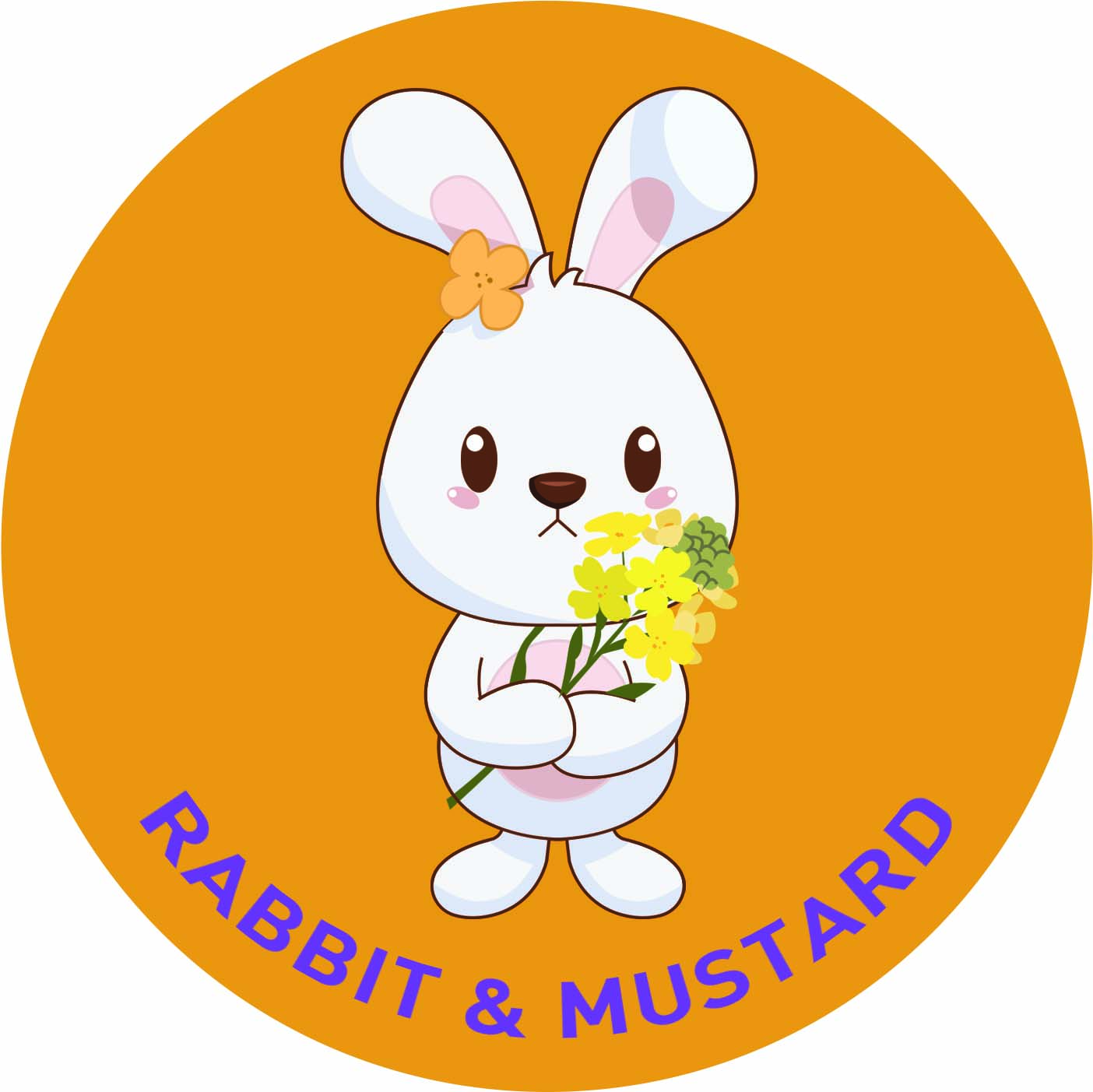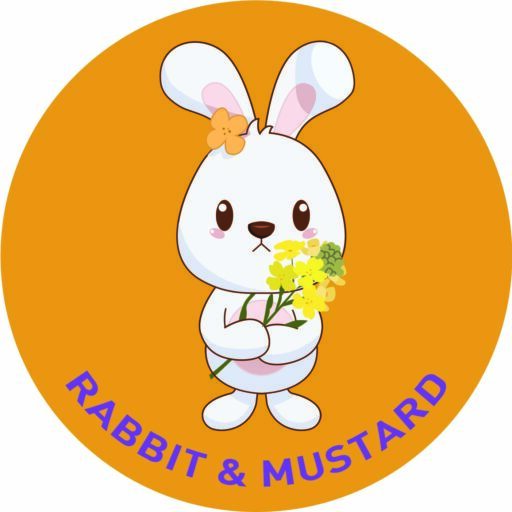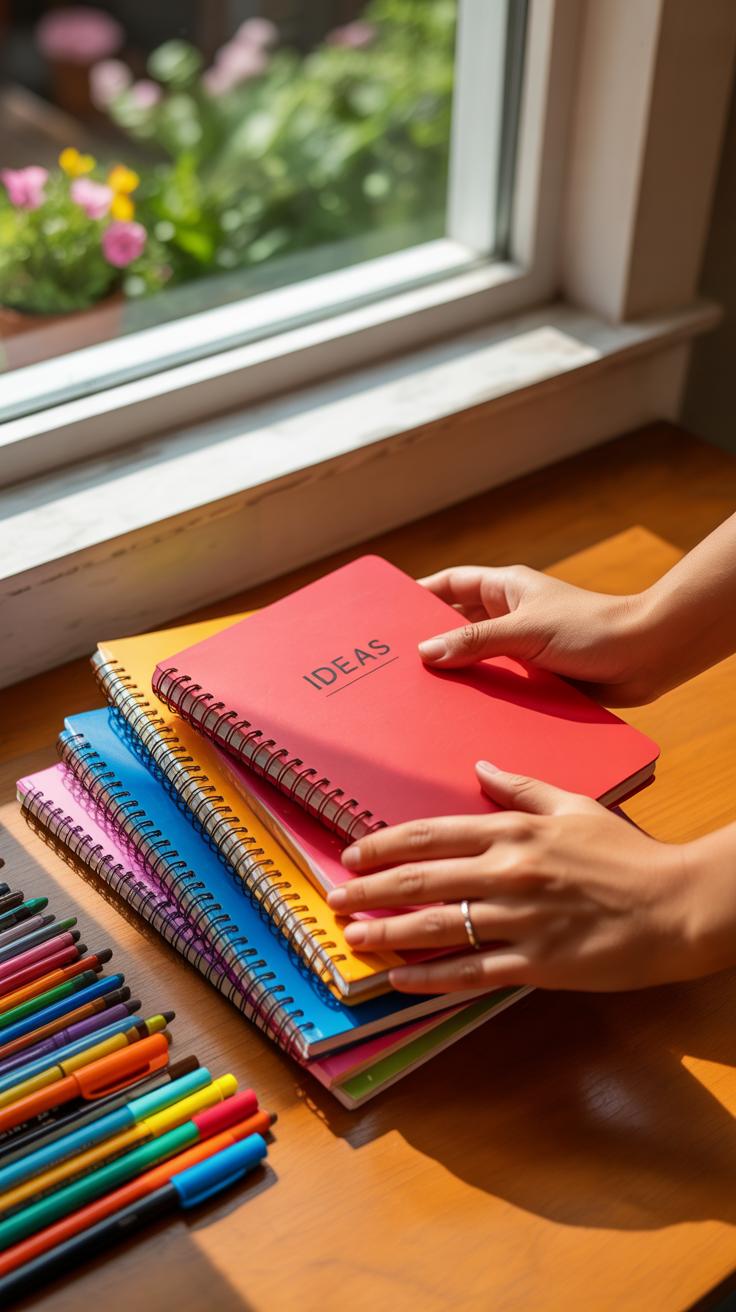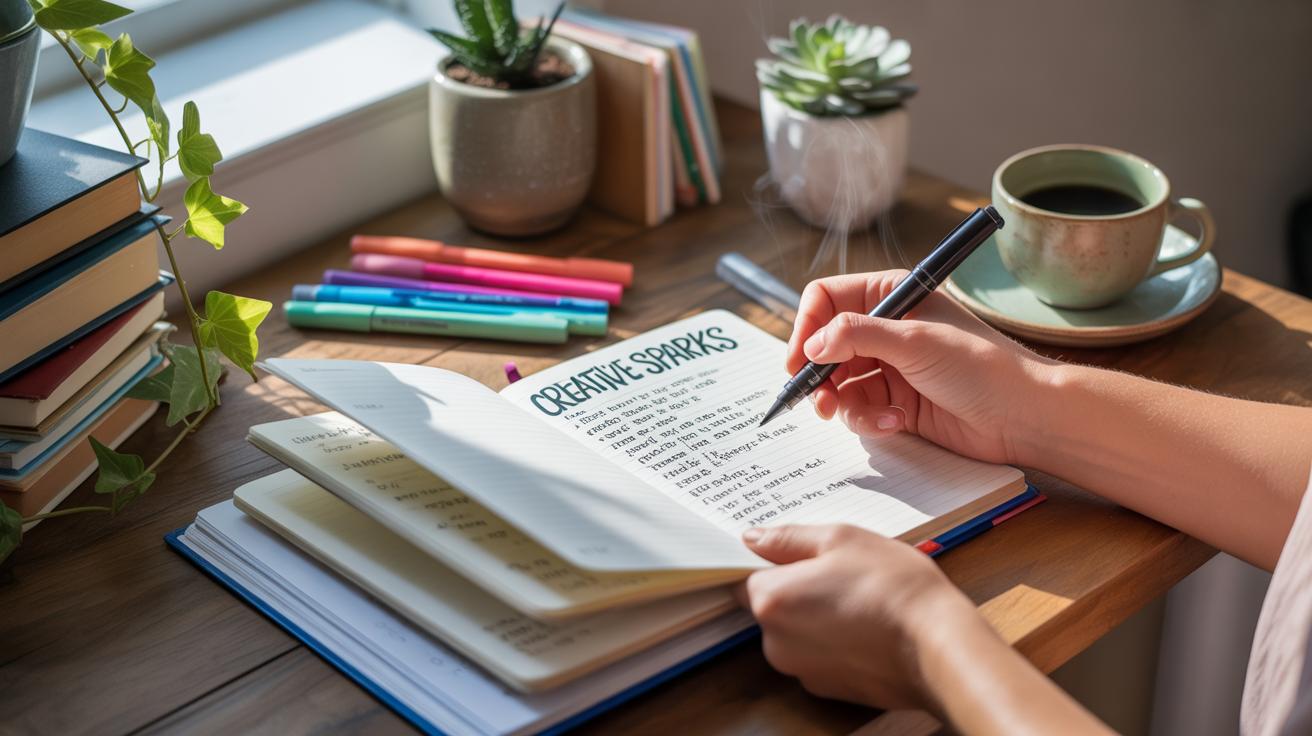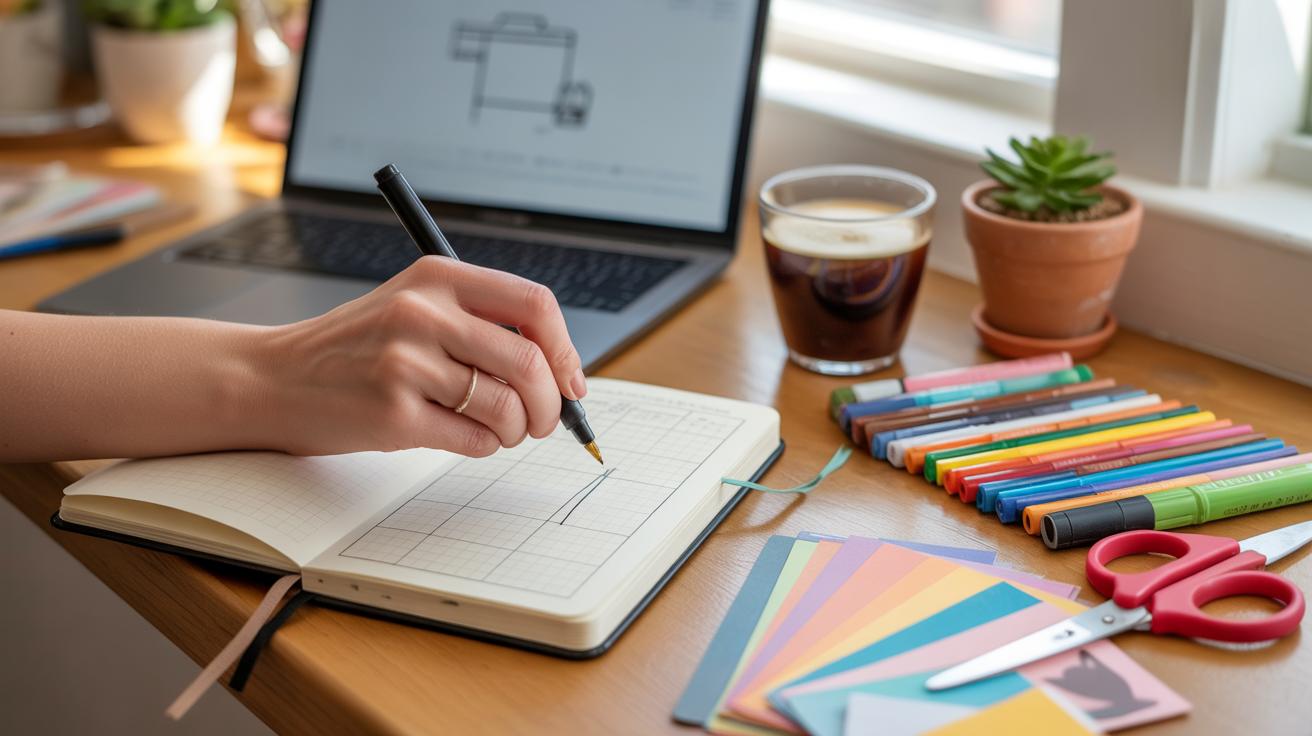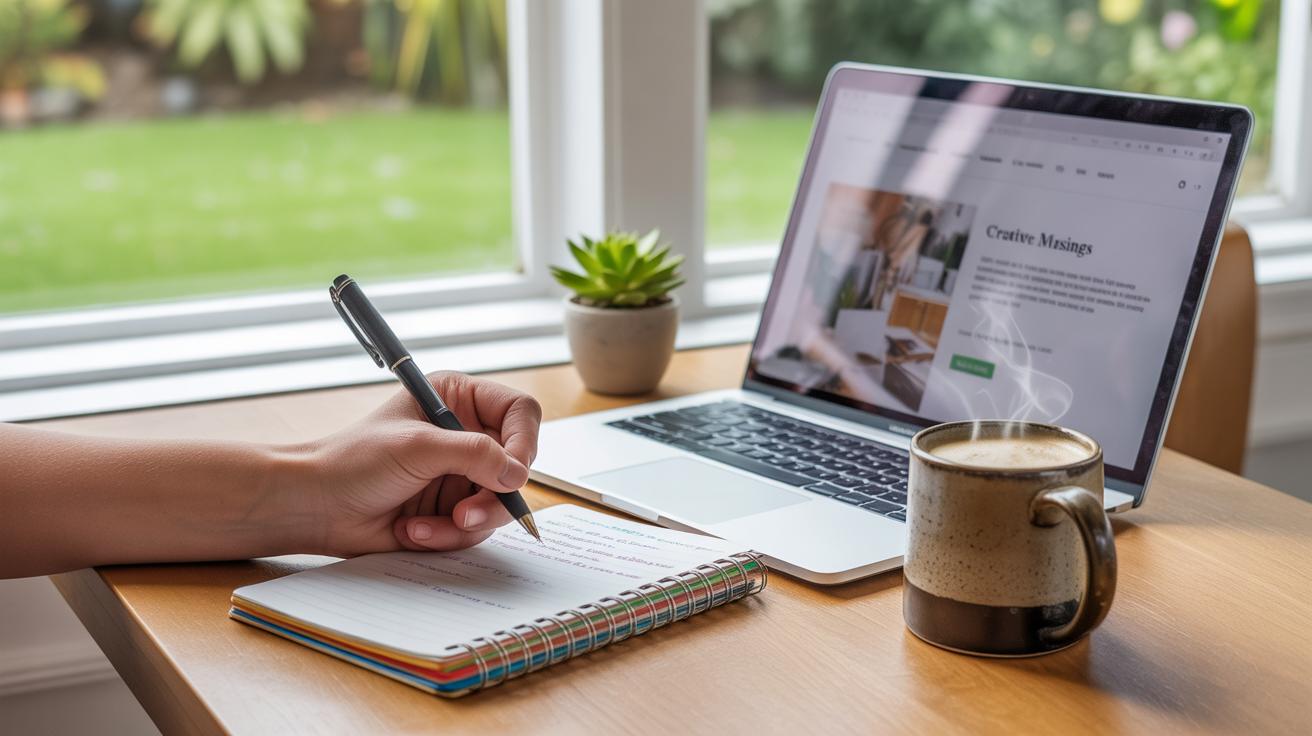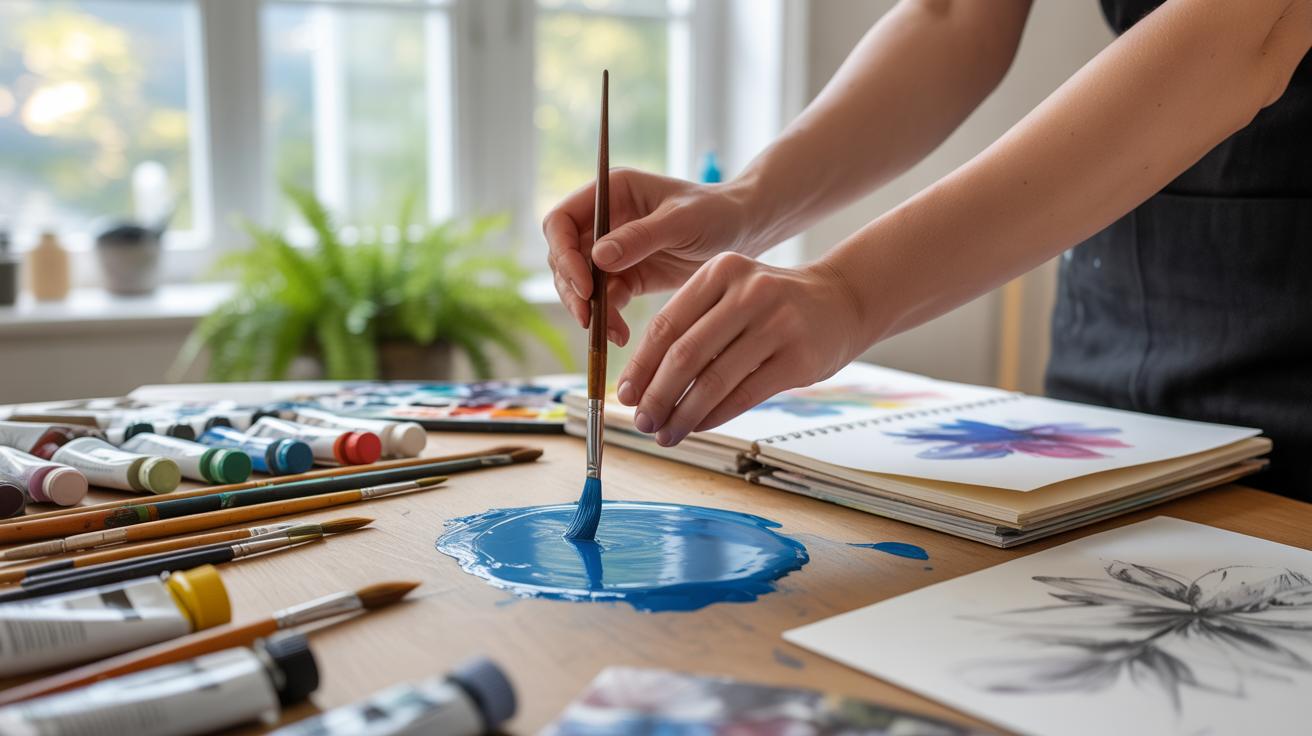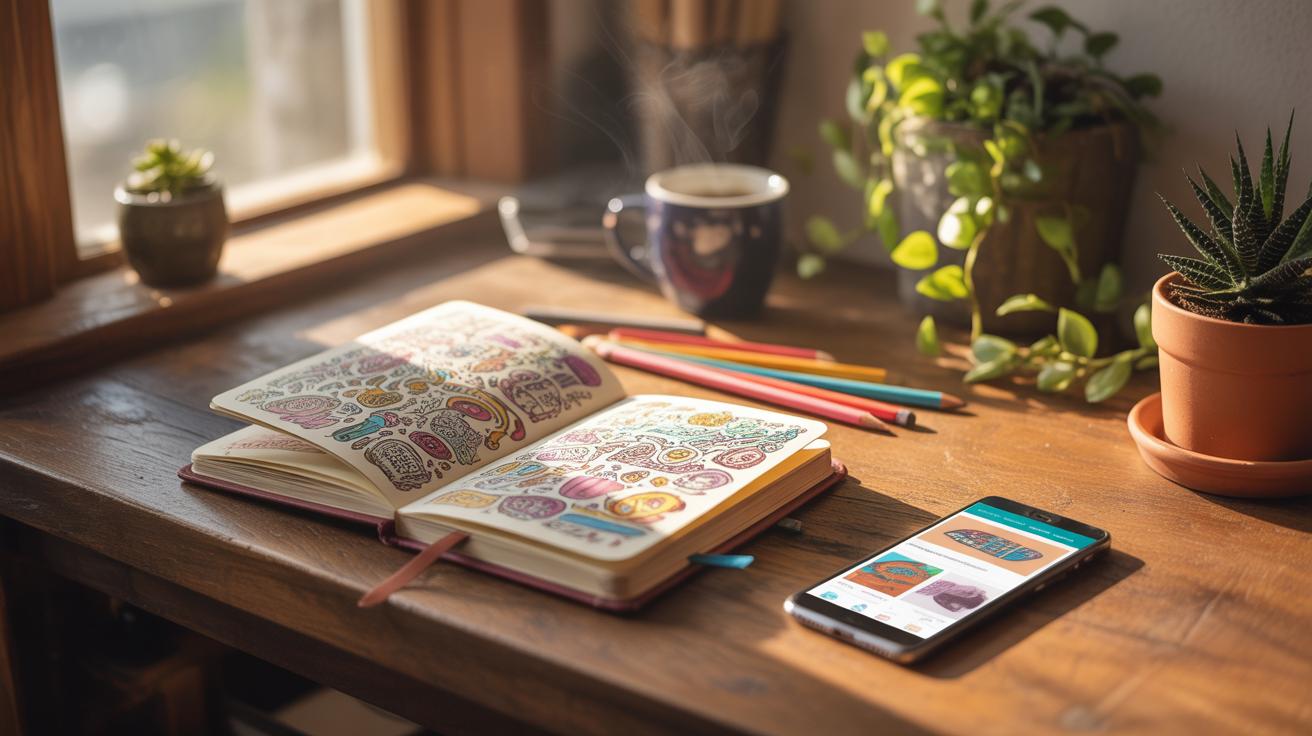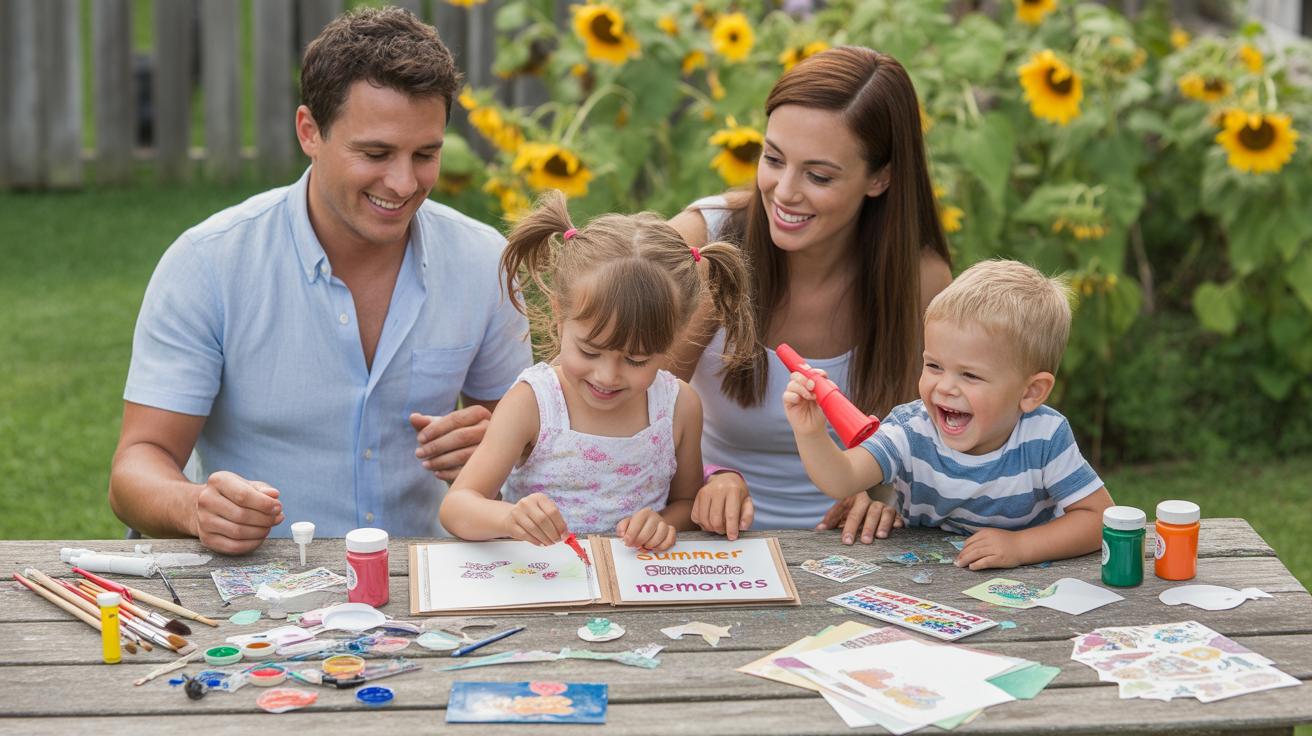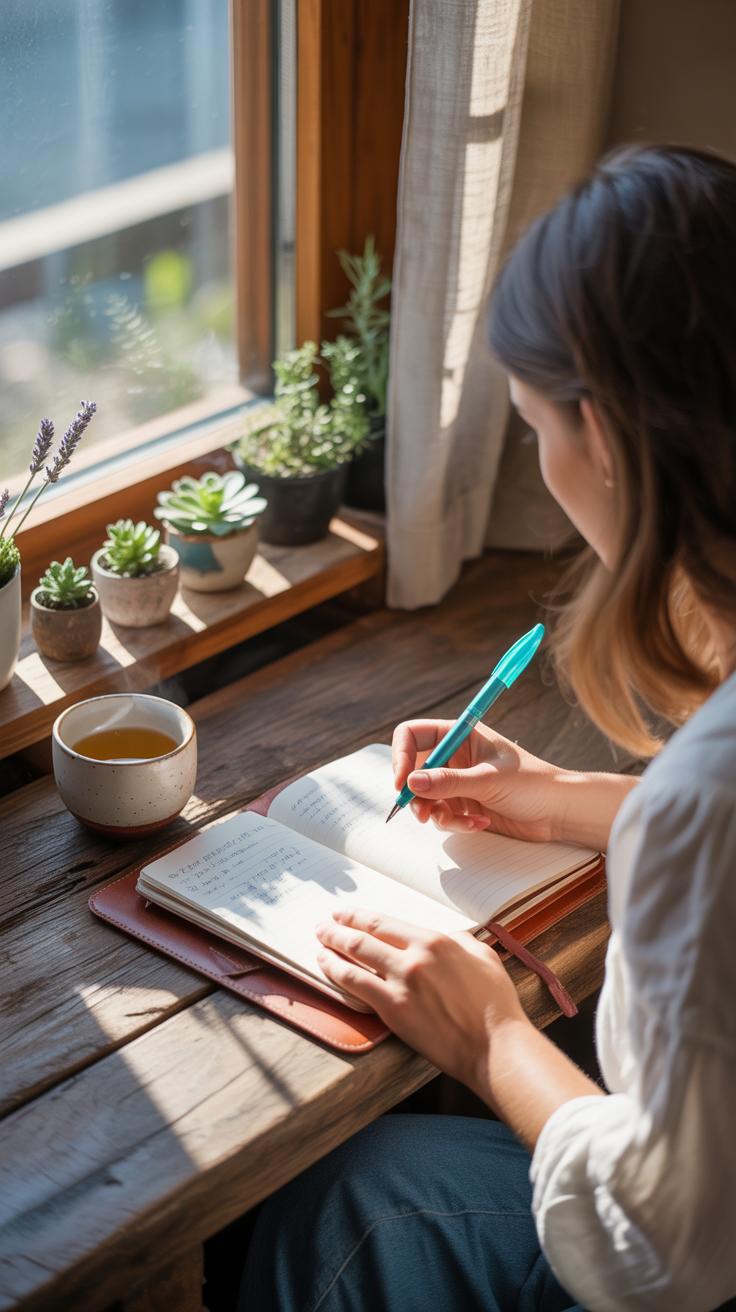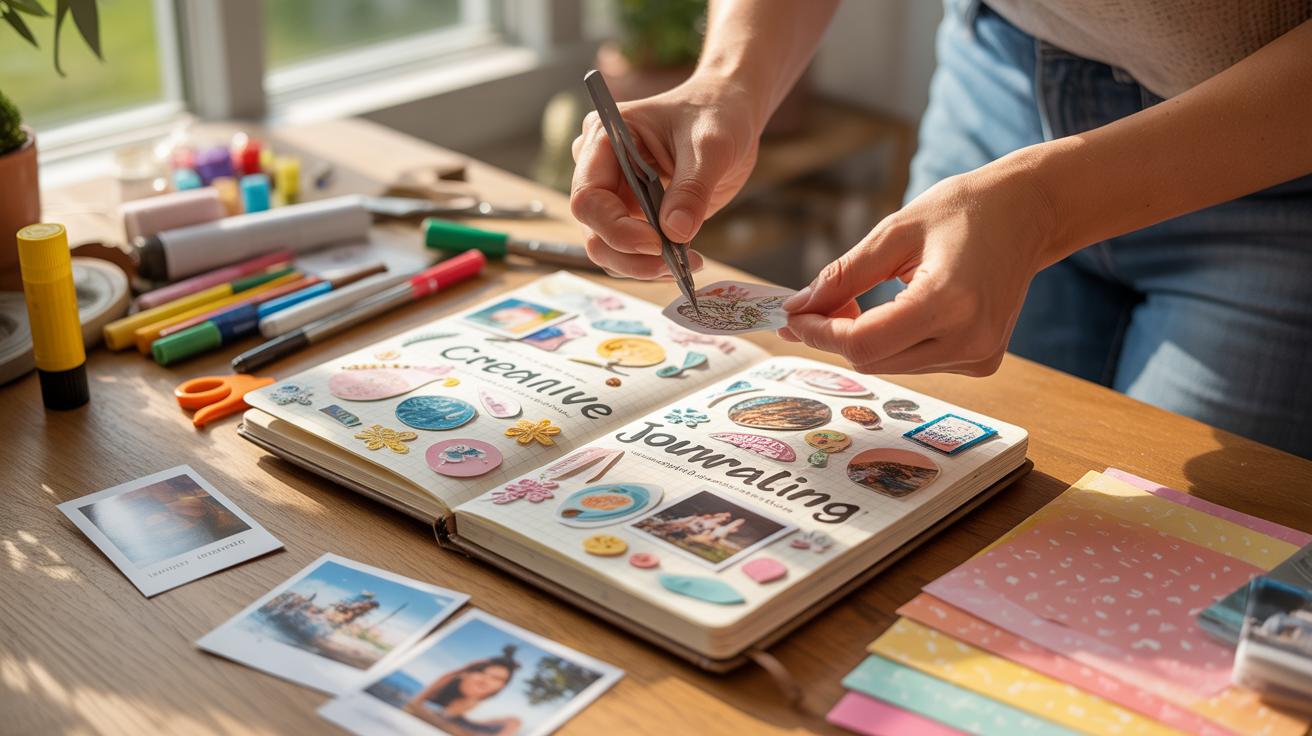
DIY Journal Ideas for Creating Fun and Unique Pages
Introduction
Journaling is more than just writing; it’s a form of art and self-expression. DIY journal ideas can transform a blank page into something personal and exciting. Your journal can become a place where you not only write but create. This article explores ways to make your journal pages fun and unique.
You’ll find ideas that encourage creativity and personal touch. From planning the layout to using simple materials, every step is designed to help you enjoy making your journal. Keep reading to discover practical tips that bring your pages to life.
Choosing Your Journal Type
When starting a DIY journal, picking the right type matters more than you might think. Notebooks, sketchbooks, and handmade journals each have their quirks and benefits, and your choice depends a lot on how you plan to use it.
Notebooks are great if your focus is mostly writing. Their pages tend to be thinner and lined or dotted, making them ideal for notes, ideas, or daily logs. They usually come bound, which means less hassle but fewer options for customization. If you want something straightforward, a simple notebook does the job well.
Sketchbooks offer thicker, blank pages that handle ink, paint, or collage better. So if you want to mix writing with sketches or use heavier media, this might be the better pick. They often have a sturdier cover, which is handy if you like to carry your journal around.
Making your own journal opens up a whole new realm of possibilities. You choose the paper, the size, and the binding style. It takes a bit of effort—cutting paper, punching holes, sewing or gluing—but it’s rewarding. Plus, you can mix paper types inside. Imagine combining lined pages for writing and watercolor paper for sketches in one book. That’s tough to find ready-made.
Try to think about your typical use: will you mostly write in one spot or take your journal everywhere? Do you want a light book or something substantial? These questions can guide you. Sometimes, you might even want more than one type, depending on your mood or project.
Planning Your Journal Pages
Before you start filling your journal pages, it helps to have a rough plan. Think of your pages like a mini project—you want something clear enough to guide your work but loose enough to leave room for surprises. How you arrange your content matters; it can make your ideas easier to understand or just more fun to flip through later.
Layouts come in many forms. You might try a simple two-column design where one side holds text and the other, sketches or lists. Grids offer a neat way to separate different thoughts or categories. Then, there’s the freeform style, which lets you place elements wherever inspiration strikes—though it can look chaotic if you’re not somewhat careful. Each layout helps your brain organize ideas differently, so maybe test a few and see which feels right.
When it comes to themes, you want focus without feeling boxed in. Themes can be broad, like a season—say, autumn with its changing colors and moods—or more personal, like an emotion you’re experiencing. Hobbies work too, maybe gardening or music, which can give you prompts and images to draw on. Choosing a theme can make journaling less intimidating and give each page a purpose. What’s been on your mind lately? That might be your best theme to start with.
Try mapping out roughly what content goes where before committing pen to paper. Sketch a quick draft to see how much space you’ll need for words, doodles, or lists. This planning step saves time and frustration afterward; you won’t have to squeeze in ideas or leave blank spots awkwardly. And sometimes, even a rough sketch loosens you up creatively, making the actual page more fun to create.
Using Colors and Patterns
Colors are one of the simplest ways to bring life to your journal pages. You don’t need to be a painter or know all the rules, but a little color theory can help you avoid clashing or muddled combinations. At the base, there are primary colors—red, blue, and yellow. Mix those, and you get secondary colors like green, orange, and purple. You can play with complementary colors, which sit opposite each other on the color wheel, such as blue and orange. They create contrast that makes elements pop without overwhelming the eye. Or, if you prefer something calmer, go for analogous colors; these are neighbors on the wheel and blend nicely together, like blue, teal, and green.
Maybe you feel unsure about where to start. That’s okay. Try picking one base color and building your page around it with different shades and tones. Sometimes, limited palettes make pages more cohesive, not less.
Patterns can bring texture and interest without cluttering. You might try stamping with simple shapes—circles, leaves, words—just whatever you have at hand. Stencils offer more control if freehand feels intimidating; you can layer few patterns for depth. Drawing repetitive elements, like dots or crosshatches, gives your page personality but be mindful not to overdo it. Patterns should guide the eye, not distract from your content.
Here are a few quick tips to try:
– Use paint dabbers or sponges to create irregular, soft backgrounds
– Cut shapes from scrap paper and use them as stamps, especially for bold shapes
– Try combining a solid block of color with a minimal pattern overlay
– Don’t hesitate to mix hand-drawn lines with printed stamps; the imperfect blend often looks best
What colors or patterns make you pause when you see them in other journals? Experiment with those. It might surprise you how small shifts in color or pattern choice change the entire tone of your page.
Incorporating Photos and Mementos
Adding photos and keepsakes to your journal pages brings memories to life in a way words alone often can’t. But how do you attach them without making the page feel cluttered or chaotic? One idea is to treat photos like mini stories within your journal. You might crop them into interesting shapes or use washi tape to frame them, which adds a casual, handmade feel. Sometimes overlapping photos slightly can suggest a timeline or connection, instead of arranging them like a neat grid.
Think about photo placement like a conversation. Placing them near written reflections or doodles can deepen the story you’re telling. Maybe a photo at the page’s corner contrasts with a journal entry running the full page. Or try flipping the typical photo size by printing smaller ones and scattering them like detail shots, letting the viewer explore rather than just glance.
When it comes to mementos like tickets or leaves, securing them can be tricky. Pocket envelopes glued onto pages are surprisingly handy—you can stash flat or bulky items safely and even peek inside. Sewing in small pockets is a bit more involved but gives a nice personalized touch. If attaching directly, clear photo corners hold papers without damage, while glue dots keep things tidy when you’re in a rush.
Protecting delicate items sometimes means layering translucent paper or vellum over them. That soft cover can hint at what’s beneath, adding a sense of mystery. You might consider folding larger keepsakes to fit or including scanning copies if the originals are fragile. Mixing tangible souvenirs with your own handwriting blends memory with reflection and invites you to revisit moments in a tactile way. What small item might you want to save next, and how could it tell a story differently than a sentence?
Writing Prompts for Journals
Writing prompts can nudge you out of a blank-page freeze. They gently steer your thoughts without locking you into any strict path, which can feel pretty freeing. When you use prompts, your journal turns from a simple record into a place of discovery. Sometimes you find yourself writing things you hadn’t expected to—but in a good way. It’s like the prompt is a push, but what you do with it is entirely your own.
Daily prompts work well if you want a little structure without pressure. Try themes like:
- What made you smile today?
- Describe the weather and how it affected your mood.
- List three things you’re grateful for right now.
- What’s one small thing you’d like to change tomorrow?
- Recall a recent conversation and your reactions.
These aren’t about journaling whole essays but just capturing little moments or thoughts. Sometimes the simple questions lead to surprising reflections later.
If you feel like mixing things up, creative prompts invite more imagination. You might try:
- Write a short story from the perspective of an object nearby.
- Sketch a scene inspired by a memory, then write a sentence about it.
- Invent a letter to your future self or to someone who’s influenced you.
- Describe a dream you had as if it were a movie plot.
- Create a quick comic strip about your day or an idea.
These prompts push you beyond just words. They can grab your creative side in ways plain writing might not. Sometimes I start with a doodle and then the words just flow. Other times, the words come first and the sketches follow.
Could prompts sometimes limit what you want to say? Maybe. But they’re also tools, not rules. You can follow them loosely or ignore parts that don’t resonate. The key is to keep your journal feeling like your space—even when you borrow a little guidance along the way.
Adding Decorative Elements
Using Stickers and Tape
Stickers and washi tape offer simple ways to bring life to your journal pages. Stickers can highlight certain words or images, breaking up plain text and drawing your eye to specific spots. I’ve found that using translucent or patterned washi tape along the edges adds subtle texture without overwhelming the page. You don’t need to cover every blank space; sometimes just a strip here or there is enough to brighten things up.
Try layering washi tape in different widths and patterns. Overlapping tapes create a playful effect and add depth. It’s tempting to go all out, but I think the trick is knowing when to stop. The tape doesn’t have to line up perfectly—letting edges peek out unevenly can actually look quite charming.
Cut-Outs and Collages
Creating collages from paper scraps, magazine clippings, or small fabric pieces gives your pages a tactile quality others won’t expect. I usually keep a stash of interesting bits from magazines or old books, and when an idea strikes, I glue them down in clusters rather than scattered randomly. Clumping related images or words together can tell a mini story or highlight a mood.
Layer cut-outs with washi tape or stickers for even more dimension. Sometimes, placing a fabric scrap underneath a paper piece gives that extra textural contrast that makes the page pop. Don’t stress about making it perfect; imperfections often add character. Experiment with placement by moving pieces around before sticking them down—it’s a small step that saves frustration.
Experimenting with Handwriting
Your handwriting is more than just how you write words. It can shape the mood of your journal page. Trying out different styles might be a bit intimidating at first, but I’ve found it to be surprisingly refreshing—and sometimes frustrating, honestly. You may find that your normal handwriting feels dull after a while, which pushes you to try something new.
Think about cursive, block letters, or even a quirky mix of print and script. Calligraphy offers a more deliberate pace; it slows you down, making you more mindful of each letter. If calligraphy sounds too complicated, try this: take a simple pen and practice thickening downstrokes and lightening upstrokes. It doesn’t have to be perfect, just a bit playful.
Here are some tips to get started:
- Practice on scrap paper before writing directly in your journal.
- Use lined or grid paper to keep your letters uniform at first.
- Try copying fonts you like from books or online.
- Don’t worry about mistakes; they add character and feel real.
- Experiment with pens of different thicknesses to see how your writing changes.
Adding simple flourishes or loops can spice up your handwriting. Decorative fonts aren’t just for designers. You can create your own “fonts” by exaggerating certain letters or adding small patterns inside them. Sometimes, I’ll write a heading in bold block letters, then fill in the body text with quick, casual script. It breaks the page and keeps things interesting.
What handwriting style feels most like you? Or maybe you want to invent a new one? Either way, don’t feel stuck with what you’ve always done. Let your pen explore. It’s fun to see just how much your writing style can change how your journal feels to you and anyone who might peek inside.
Incorporating Art and Doodles
Journals come alive when you add art and doodles. You don’t have to be an artist to sketch in your journal. Even simple shapes, lines, or little icons can break up blocks of text in interesting ways. For beginners, starting small is key. Try drawing stars, hearts, arrows, or basic flowers—things you can do without much pressure or planning.
Carrying a small pen or pencil with you lets you draw wherever you go. Sometimes, waiting for an appointment or just a quiet moment can be the perfect opportunity. You might hesitate, wondering if your doodles look “right,” but the point is to capture a feeling or thought, not to create a masterpiece.
Simple Doodles
Easy doodles can really brighten the pages. Here are a few ideas that don’t demand much skill:
- Smiley faces or abstract squiggles
- Leaves or vines wrapping around the edge of your writing
- Little suns or clouds scattered near your entries
- Lines turning into waves or zigzags for decoration
- Boxes or frames to highlight important notes
These simple touches add personality and texture. Sometimes, just a quick doodle helps you express a thought words don’t quite catch.
Mixing Art with Writing
Combining sketches with your writing can make your pages more engaging, but it doesn’t have to be complicated. Say you’re writing about a walk you took—the story becomes richer if you add a small drawing of a tree or a shoeprint beside the text.
Try incorporating art that interacts with your writing, like arrows leading from one idea to another or little sketches replacing words (like a heart for “love”). This blend doesn’t just look nice; it makes reading your journal moments later feel more alive. Sometimes I find that doodling while writing helps me think better, though I admit it can slow me down. But maybe that’s not a bad thing.
Maintaining Your Journal Habit
Keeping up with journaling can feel like a chore sometimes, especially when life gets busy or your mind feels blank. One way to make it easier is to set a regular time for journaling. Whether it’s five minutes in the morning or ten before bed, having a routine helps turn journaling into a habit rather than a task. You don’t always have to stick rigidly to the schedule, but knowing that there’s a “usual time” can make you more likely to open your journal.
What if you miss a day, or a week? Don’t stress over it. It happens. The key is not to let one slip-up become a halt. When stuck, try small prompts or brief notes—sometimes just jotting down a single sentence about the day can restart the flow. You might find that pressure to write a lot or perfectly keeps you from writing at all; lowering expectations can be freeing.
Here are a few practical tips that have worked for many:
- Pick a consistent time slot but allow flexibility. If mornings are hectic, maybe evenings work better.
- Use prompts or questions to break through blocks. Even “What made me smile today?” can get you going.
- Allow yourself to write poorly or incoherently. The journal is for you, not anyone else.
- Reflect occasionally on why you journal. Revisiting your purpose can renew motivation.
- Don’t judge missed days; just start again. Journaling isn’t about perfection.
It’s easy to forget sometimes why you began journaling in the first place, and that’s normal. Maybe your entries won’t all be polished or deep. And maybe, occasionally, you won’t feel like writing at all. The habit is about showing up more than producing great content. What might you try next to keep yourself coming back to your journal?
Conclusions
Making a journal with your own hands adds meaning to your work. The ideas covered here show that you don’t need fancy tools to make beautiful pages. With just your imagination and some simple supplies, you can create something unique and joyful.
These DIY journal ideas are easy to try and meant for everyone. Your journal will reflect your personality and your story. Start today and watch your pages fill with memories and creativity that only you can make.
